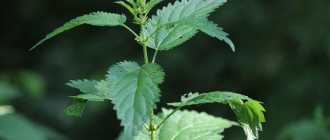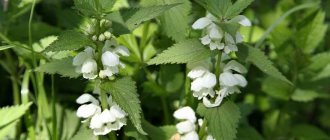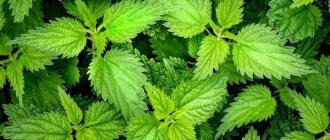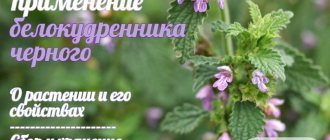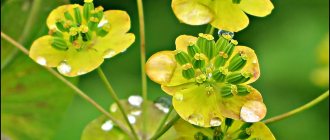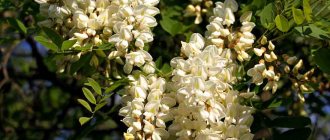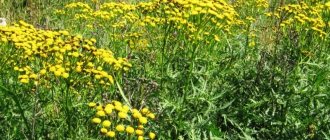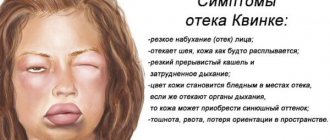Dead nettle - description
There are more than 3,500 species of Lamiaceae in the world, but there are about 30 Lamiaceae among them; they differ in the shades of their flowers and the shape of their leaves. The most striking feature is the two-lipped flower, when one of the petals partially grows together, forming, as it were, a tiny mouth. Each tier of leaves contains 10-12 flowers, which is how dead nettle differs from real nettle.
What does dead nettle look like?
The plant is often called nettle or dead nettle; it is a perennial, also known as a good honey plant. The flowers have small green spots on the corollas, the leaves are heart-shaped-oval, young leaves are used for salads. They contain many vitamins and taste like spinach. Lamia blooms from April to October.
The photo confirms what white yasmotka looks like:
- Stems – up to 50 cm, tetrahedral, covered with light hairs
- The leaves are ovate, serrated at the edges, arranged in pairs.
- The rhizome is creeping and long.
- The flowers are white, collected in whorls.
Where does dead nettle grow?
It is not for nothing that the dead nettle grass is better known as a weed; it grows everywhere and adapts to any conditions except the tundra and dry steppes. It can be found in different places in Europe, and is found in Transcaucasia, China, and Mongolia. It prefers the edges of forests, the shade of bushes and the banks of ravines, a frequent visitor to vegetable gardens and orchards, and grows near hedges and buildings.
White nettle (deaf nettle), photo, description, application, treatment.
White lily (Lamium album).
Other names: dead nettle, white nettle, cuckoo nettle, dead nettle.
Description. Perennial herbaceous plant of the Lamiaceae family. It has a long creeping rhizome. The aerial part is covered with short soft hairs. The stems are erect, tetrahedral, 20-50 cm high. The leaves are petiolate, opposite, heart-shaped, with a pointed apex, coarsely serrated along the edge, reminiscent of nettle leaves. The flowers are sessile, located in the axils of the leaves at the top of the stem. The corolla is two-lipped, white or yellowish-white, with a five-toothed green calyx. White nettle (nettle) blooms from May to September. Fruit ripening begins in June. The fruit consists of four disintegrating dark gray nuts. Dead nettle grows in meadows, forest clearings, forest edges, among bushes, near hedges, along roads, in littered areas. Distributed throughout almost the entire territory of the CIS. White butterfly reproduces by rhizomes and seeds.
Collection and preparation of raw materials. For medicinal purposes, fully developed flowers without a calyx are used and harvested. Since the process of harvesting flowers is very labor-intensive, you can use the tops of the stems, which are harvested during flowering. But it should be noted that the tops of the stems are less active than the flowers. Dry in the shade or in a well-ventilated area, spread out in a thin layer. Store raw materials in tightly closed jars. During storage, the flowers acquire a dirty gray color. Shelf life: 1 year. Composition of the plant. The flowers of white nettle (nettle) contain many tannins, saponins, the alkaloid lamiin, mucus, essential oil, choline, histamine, vitamin C. The leaves contain tannins, the alkaloid lamiin, vitamin C, provitamin A.
Useful properties, application, treatment. White nettle (nettle) has hemostatic, astringent, expectorant, diuretic, and metabolism-regulating properties. Clary preparations are often used in the treatment of acute and chronic diseases of the bladder and urinary tract (cystitis, pyelonephritis, urethritis), as well as acute and chronic glomerulonephritis. An infusion of flowers is indicated for nasal, pulmonary, uterine, intestinal, and hemorrhoidal bleeding; for bronchitis, tracheitis, pneumonia, bronchial asthma, as an anti-inflammatory and expectorant. Clary infusion is prescribed to young women and girls who experience pain in the lower abdomen a few days before menstruation. The infusion is also used for anemia and headaches. Externally - for sore throat, gingivitis, furunculosis, eczema, allergic dermatitis, for the treatment of leucorrhoea in women. It is better to combine external treatment with oral infusion.
Dosage forms and doses. Infusion of flowers or herb white jasmine. 1.5-2 tablespoons of dry raw materials are poured with two glasses (400 ml) of boiling water, left for 1 hour, filtered. Take 1/2 cup 3-4 times a day. Infusion for external use. Prepare by doubling the dose of herbs or flowers. In summer, during the flowering period of the plant, you can use the juice of the herb. Take 2 tablespoons of juice 3 times a day, sweetening it with honey. Externally, the juice is applied to problem areas of the body.
Article on the topic: Hawkweed - useful properties, description
Infusion for anemia. To prepare the infusion, take: 2 parts of dry crushed white damselfish flowers; 2 parts dry crushed blackberry leaves; 3 parts of dry crushed St. John's wort herb; 3 tablespoons of this mixture are poured into 600 ml of boiling water, left for 3 hours, filtered. Take 1 glass 3 r. in a day.
Nettle - description and characteristics
Depending on the species, nettle can be either a monoecious or dioecious erect plant with one stem and several lateral shoots. The height of nettle varies from 0.55 m to 2 m. The edges of nettle leaves, located opposite each other, are solid, with light or deep serrations, and also deeply dissected into 3-5 parts. The stipules located at the base of the petiole are paired and quite often fused together.
The stems and leaves of nettle are colored in various shades of green, and their surface is in most cases covered with a huge number of stinging hairs. Each of them is a kind of ampoule containing acetylcholine, serotonin, histamine, as well as formic acid, tartaric and oxalic acid. When it comes into contact with the body of a person or animal, the siliceous tip of the hair breaks off and penetrates under the skin, and along with it the contents of the “ampoule,” causing a chemical burn at the point of contact. Histamine, serotonin and acetylcholine cause pain and redness, while tartaric and oxalic acids, found in some types of nettles, are responsible for the duration of pain.
The branching inflorescences of nettle of the false-spike-shaped or paniculate type consist of small unisexual, less often bisexual, flowers.
Male flowers of stinging nettle
Male flowers of stinging nettle
Stinging nettle female flowers
Nettle fruit
Botanical description
White lily. Botanical illustration by Jacob Sturm from the book Deutschlands Flora in Abbildungen
, 1796
The rhizome is creeping, horizontal.
The stems are tetrahedral, erect, up to 170 cm tall, with slightly drooping long hairs deflected downwards.
Leaves are opposite, petiolate. Leaf petioles are up to 10-4 cm long (the apical leaves are much shorter - up to 1 cm). The leaf blades are ovate or ovate-triangular, wrinkled, up to 10 cm long, sharply serrate. The edges of the leaves are large serrate.
The entire plant is short pubescent.
The flowers are sessile, located in the axils of the upper leaves in false whorls. The flowers are in axillary rings of 6-14 pieces. The bracts are linear-subulate, and much shorter than the calyx. The calyx is bell-shaped, with five teeth. The teeth are longer than the tube, awl-shaped and pointed. Zev oblique. The corollas are white. There are greenish spots on the lower lip. The tube is curved, widened at the throat. The upper lip is helmet-shaped, bent at a right angle. The lower lip is obversely kidney-shaped. The anthers are black-violet. It blooms in Central Russia almost the entire growing season - from April to October.
Flower formula: ↑ C a ( 5 ) C o ( 3 + 2 ) A 4 G ( 2 _ ) {\displaystyle \uparrow Ca_{(5)}\;Co_{(3+2)}\;A_{4} \;G_{({\underline {2}})}} [2].
The fruit is a coenobium: a fractional fruit consisting of four nut-like parts (erems). Erems are dark gray ovoid with projections. The fruits ripen in Central Russia in June-October.
Description
This medicinal plant reaches one and a half meters in height. Its rhizome is creeping. The leaf shape and appearance resemble nettles, but they do not have the stinging properties of nettles. Most likely, this is why it was called deaf nettle.
The plant has a tetrahedral hollow stem, it does not branch and is covered with white hairs, just like the leaves.
The leaves are arranged oppositely and have a heart-shaped-lanceolate leaf blade.
The flowers have a white or yellowish corolla. They are located in the axils of the leaves, close to the top. The fruit consists of four nuts, having a shape close to triangular. There are warty growths on their surface.
Dead nettle blooms from May to September, and the seeds ripen from August to October.
Places of growth
White jasmine is distributed quite widely. It grows in deciduous forests and parks. It can be seen in vacant lots, in unkempt gardens, near fences and along roads.
Chemical composition
The chemical composition of the plant is quite diverse. The leaves and flowers contain large amounts of tannins. They also contain saponins, alkaloids, essential oils and flavonoids. The plant contains gallic, ascorbic and chlorogenic, p-coumaric, caffeic and ferulic acids. The chemical composition contains histamine, choline, tyramine and various trace elements.
Medicinal properties of jasmine
Preparations based on white claspberry have a number of medicinal properties. This plant has anti-inflammatory, antispasmodic and hemostatic properties. It has an expectorant effect, tones, creates a diuretic effect, and has a positive effect on the skin with allergic dermatoses.
Areas of use
Almost all parts of the plant are used for medicinal purposes.
An alcoholic tincture of rhizomes is used for toothache and insomnia.
A decoction of the aerial part is used internally for headaches, heart and nervous diseases.
The juice from the aerial part has a calming effect and is used for insomnia, hysteria and nervous excitement.
The juice is used externally and internally for skin problems: furunculosis, eczema, diathesis, rash.
Juice compresses help treat burns and wounds.
Decoctions and infusions of flowers are taken orally as hemostatic agents, including for internal bleeding. They are also used as a diuretic.
Collection and preparation
The flowers of the white claret are collected only when they are in full bloom. The corollas are picked along with the stamens. Dry in a ventilated area at a temperature of twenty-five degrees. The raw materials are laid out in a thin layer.
The leaves of the plant are also harvested during flowering. Dry as described above.
Rhizomes are dug up in the fall, when the growing season is already over. It is better to dry them using an oven or other appliances. Finished raw materials should not bend, but break easily.
Contraindications
There are no toxic substances in the plant. An overdose when taking it is not dangerous. But it should be remembered that it is not advisable for people with increased blood clotting, hypotension and some other problems to take drugs from claret for a long time.
Recipes
An infusion of flowers is prepared from one or two spoons of raw materials. They are poured with two glasses of boiling water, left for two hours and filtered. Take half a glass four times a day.
Laminaria juice is prepared from fresh herbs or flowers. The raw materials are crushed and the juice is squeezed out of it using a cloth. Take three times a day, two tablespoons with a spoon of honey.
In folk medicine, decoctions and infusions were made from dead nettle. Clarity juice also has medicinal properties (especially for nosebleeds!). If your child's nose bleeds, do not panic, but drop a few drops of dead nettle juice into each nostril.
The main medicinal properties of jasmine are: diuretic, antibacterial, anti-inflammatory, expectorant and hemostatic. Dead nettle does not sting because it does not contain formic acid. It is used in folk medicine as a hemostatic agent, as well as an astringent and expectorant. Claryweed (LAMIUM ALBUM) has another healing property - it regulates metabolism in the body.
Medicinal properties and uses
The plant is used in medicine, dermatology and other industries. Usually the aerial part of the white claret (flower corollas and leaves) is used. They are harvested in the summer, when they are still young.
Application in medicine
In medicine, dead nettle is used to treat cystitis, urethritis, nephritis, bronchitis, and bleeding. The plant has anti-inflammatory, hemostatic, antispasmodic, and anticonvulsant effects.
Since jasmine has enveloping properties, it is used to treat gastrointestinal diseases. The juice of the plant can be applied to the nose for rhinitis and nosebleeds.
The flowers of the alba have a calming, hypnotic, expectorant, diuretic and astringent effect. They are capable of thinning mucus. Infusions and decoctions are prepared from flowers and leaves. Infusions are often used to eliminate chronic tonsillitis, sinusitis, rheumatism, as well as uterine and pulmonary bleeding, and anemia.
Decoctions are often used in neurology to treat various pathologies. They treat insomnia, nervous disorders, migraines, as well as anemia, scrofula and diarrhea.
White lily is well tolerated and has virtually no contraindications. An exception is made for women during the period of bearing a child, since jasmine can provoke a miscarriage.
Before using drugs with this plant or its infusions, it is recommended to consult a doctor.
Application in dermatology
In dermatology, aqueous infusions of the plant are usually used in the form of lotions and compresses. They treat skin infections. Claryweed promotes the healing of wounds and burns. In addition, the doctor may prescribe baths with a decoction of this medicinal plant. To eliminate inflammation on the skin, as well as wounds and ulcers, ulcers and acne, take fresh leaves and shoots of the plant, grind them into a paste and make compresses.
Infusions, as well as powder from the whisks, are used to eliminate hematomas, eczema, urticaria and diathesis. They are prescribed for ulcers and rashes that itch continuously. If a child has diathesis, urticaria or furunculosis, the doctor may prescribe juice from the plant. It is taken both internally and externally.
Nettle flowers are often added to various infusions from which infusions are prepared for the treatment of psoriasis, acne and allergic skin manifestations.
Use in cooking
In cooking, salads are prepared from young leaves. They contain many vitamins and nutrients. The plant tastes somewhat like spinach.
Vinaigrettes, soups, and main courses are made from the leaves of the white cherry. Cooks use dried leaves of the plant as a seasoning. Aromatic tea is also prepared from dry raw materials. Usually a little St. John's wort and thyme are added to this drink.
Economic use of white jasmine
White jasmine is often used on the farm, as the plant is a good honey plant. It produces large amounts of nectar and pollen. It is planted on plantations where there is an apiary nearby.
The honey from this medicinal plant can come in different shades. It is usually dark in color, has a subtle pleasant aroma and rich taste.
Yasnotka in folk medicine
In alternative medicine, the plant is usually used for menstrual irregularities, uterine bleeding, diseases of the genitourinary system, as well as for the treatment of tuberculosis and bronchitis. Nettle juice is used for skin pathologies, bruises and burns, as well as allergic skin reactions.
In folk medicine, decoctions, infusions from the plant and its juice are used. They are used to gargle the throat for a sore throat, and to put drops in the nose for rhinitis and sinusitis.
The infusion is prepared as follows:
- Pour five teaspoons of dry flowers of white damask into two glasses of water.
- Place the container in a water bath.
- Prepare the infusion for fifteen minutes.
- Strain and cool.
- Bring the infusion to the required volume by adding boiled water.
- Take half a glass orally throughout the day in equal parts. Drink the infusion before meals.
The decoction is prepared as follows:
- Thirty grams of dry leaves are poured with one liter of boiling water.
- Place in a water bath for fifteen minutes.
- Strain the broth and add the required amount of boiled water.
- Take the decoction five times a day, one tablespoon before meals.
According to indications, douching is done, and also consumed orally in the form of tea.
The juice is prepared as follows:
- The stems and leaves are washed and doused with boiling water.
- Pass the raw materials through a meat grinder.
- Place the pulp in two layers of gauze and squeeze out.
- The juice is boiled for three minutes.
Take one tablespoon four times a day with meals.
The juice can be placed in the nose for a runny nose, and can also be applied to the affected areas of the skin.
Medicinal properties of white nettle
In classical medicine, white nettle is not used. But abroad the grass has found wide use. The medicinal properties of the flowers are appreciated there. Exporting raw materials is hampered by the fact that harvesting is a very labor-intensive process. Although the flowers themselves shrink well, so they have practically no weight.
Yasnotka is an effective medicine
The high content of useful substances in the inflorescences and leaves allows the plant to be used to treat the following diseases:
- jaundice,
- scrofula,
- dermatitis,
- internal bleeding,
- nervous disorders.
Treatment is carried out by drinking a decoction of claspberry, which must be prepared daily.
In addition to internal use, it is possible to use the medicine externally. For example, burns, hemorrhoids, wounds and skin diseases are moistened with a decoction. For sore throats, they are used to gargle the throat and mouth.
Medicinal properties of the plant
In the official medicine of the Russian Federation, white jasmine is actually not used. However, the plant is widely exported to other countries as a medicinal raw material. The herb and flowers of the alba are used in homeopathic practice.
Traditional medicine in Bulgaria recommends the use of powder from dried flowers of the alba for the treatment of urticaria, photoderomatitis, skin cracks, and eczema.
Dry the raw material in the shade, but at a good temperature, otherwise it will darken. An infusion of flowers has an astringent, hemostatic, anti-inflammatory, soothing and blood purifying effect, and also effectively resolves sputum in bronchopulmonary diseases.
It is widely used as an effective remedy for skin diseases: scrofula, urticaria, rashes, eczema, seborrheic dermatitis, lichen planus, etc. It is effective to use jasmine for bleeding, including internal (stomach, lung, uterine ulcers).
It is used in the treatment of the genitourinary system (bladder, kidneys). Claryweed is valued for its ability to reduce and relieve allergies. Externally, an infusion of flowers is used for washes, local baths and compresses for cramps, itchy rashes, hemorrhoids, wounds, abscesses, ulcers and burns.
The same infusion can be successfully used to gargle for sore throat.
Hotness
Stinging hairs on the stem of stinging nettle close-up
Many types of nettles protect themselves from herbivores with the help of stinging hairs located on all parts of the plants. Each hair is a large cell, shaped like a medical ampoule. The upper part of the “ampule” protrudes beyond the surrounding cells of the outer surface of the plant. This tip contains silicon salts. Even with a slight impact, the tip breaks, the sharp end penetrates the skin, and the contents of the cell enter the animal’s body. The cell sap contains histamine, choline and formic acid, the effect of which is manifested by a feeling of a sharp “burn” at the site of touching the plant.
The stings of most nettle species are relatively harmless, but there are several tropical species that are very painful to touch and can even lead to death ( Urtica ferox
, nettle tree from New Zealand).
Classification of nettles
The genus Urtica consists of more than 50 species of nettle, some of which are recognized by modern science as subspecies and synonyms. Below are the types of nettles with an indication of their growing area according to data from the website (www.theplantlist.org/tpl1.1/search?q=urtica):
- Urtica andicola
- Urtica angustifolia – Nettle leaf. Russia, China, Japan, Korea
- Urtica aquatica
- Urtica ardens. China.
- Urtica atrichocaulis. Himalayas, southwest China
- Urtica atrovirens. Western Mediterranean
- Urtica ballotifolia
- Urtica berteroana
- Urtica cannabina - Hemp nettle. Russia and Western Asia from Siberia to Iran
- Urtica chamaedryoides. Southeast North America
- Urtica circularis
- Urtica dioica - Stinging nettle. Europe, Russia, Asia, North America
- Urtica echinata
- Urtica ferox – Ongaonga nettle tree. New Zealand
- Urtica fissa. China.
- Urtica flabellata
- Urtica galeopsifolia – Nettle. Central and Eastern Europe, Russia
- Urtica glomeruliflora
- Urtica gracilenta. USA (Arizona, New Mexico, western Texas), northern Mexico
- Urtica haussknechtii
- Urtica hyperborea. Himalayas from Pakistan to Bhutan, Mongolia and Tibet
- Urtica kioviensis - Kiev nettle. Eastern Europe
- Urtica laetevirens – Light green nettle. Russia, Japan, Manchuria, Korea
- Urtica leptophylla
- Urtica lilloi
- Urtica longispica
- Urtica macbridei
- Urtica magellanica
- Urtica mairei. Himalayas, southwest China, northeast India, Myanmar
- Urtica masafuerae
- Urtica massaica
- Urtica membranacea. Mediterranean, Azores
- Urtica Mexicana
- Urtica minutifolia
- Urtica mollis
- Urtica morifolia. Canary Islands (endemic)
- Urtica orizabae
- Urtica parviflora. Himalayas
- Urtica pilulifera – Ball nettle. Southern Europe, Russia
- Urtica platyphylla – Flat-leaved nettle. China, Japan, Russia
- Urtica praetermissa
- Urtica pseudomagellanica. Bolivia
- Urtica pubescens – Hairy nettle. Northern Russia, central Asia
- Urtica purpurascens
- Urtica rupestris. Sicily (endemic)
- Urtica sondenii – Sonden's nettle. Northeastern Europe, northern Asia
- Urtica spiralis
- Urtica stachyoides
- Urtica subincisa
- Urtica taiwaniana. Taiwan
- Urtica thunbergiana - Thunberg nettle. Japan, Taiwan
- Urtica triangularis
- Urtica trichantha
- Urtica urens - Stinging nettle. Europe, Russia, North America
Types of nettles that grow in Russia:
- Urtica angustifolia – Nettle leaf
- Urtica cannabina - Hemp nettle
- Urtica dioica - Stinging nettle
- Urtica galeopsifolia – Stinging nettle
- Urtica kioviensis - Kiev nettle
- Urtica laetevirens – Light green nettle
- Urtica pilulifera – Ball nettle
- Urtica platyphylla – Flat-leaved nettle
- Urtica sondenii – Sonden's nettle
- Urtica urens - Stinging nettle
general information
Spring vitamin greens are always good for any feast. It helps to improve the health of the body, adds vigor and strength. Therefore, many housewives do not refuse to use wild edible herbs.
Below are some of the most common and most famous photos of edible herbs and their descriptions.
There is a special day in the folk calendar called Mavra - May 16 of the new style. On this day, in the old days, a dish appeared on the tables of peasants (and gentlemen) that was prepared from fresh green forest and meadow herbs. And it was very appetizing.
And in the ancient Russian “Izbornik of Svyatoslav” (a written monument of the 11th century) it says: “There is great power in a vegetable.” This means not only garden greens (there were few of them at that time), but also greens growing in the wild.
Edible wild plants and herbs are more beneficial. Below we will present some types of “pasture” that have a large number of different vitamins, minerals and other useful substances.
Varieties and differences of nettles
In total, there are 16 species of Lamiaceae in the Lamiaceae family; they have the same properties. They got their name from the shape of the flower, which looks like the throat of an animal.
Another variety of herb similar to nettles is the dead nettle, which blooms with lilac flowers. Its popular name is motherwort. The grass is widespread, growing in Belarusian forests, Ukraine, Crimea, the Urals and the Caucasus. In different places where it grows it can be called differently: heart grass, motherwort five-lobed, motherwort cordial. The structure of the plant corresponds to the Lamiaceae family, similar to nettle, with all the characteristics of this species.
Knowing the signs of irregular nettle, it is easy to distinguish simple and ornamental nettle from stinging nettle:
- Lariat is similar to nettle, but it will not burn the skin in your hands;
- flowers range from white to blue;
- the flowers are filled with nectar that smells like honey;
- the leaf is not very different from the usual nettle structure, but can be decorative silver in color, with a dark border;
- the smell of the stem and leaves of the nettle is heavy and unpleasant, perhaps for this reason animals do not eat it, and young birds are often fed with common nettle for good growth;
- nettle, which blooms white, is not recognized by doctors as medicinal, and stinging nettle is mass-produced for the pharmaceutical industry;
- fake nettle produces a lot of sugary, light, delicate nectar, and the stinging herb is not honey-bearing.
Note! Decorative claret is grown at home to decorate flower beds and lawns. It will turn green for several months, pleasing the eye with small, bright, colorful flowers, attracting butterflies and bees
False nettle is a low biennial plant with numerous flowers with a purple-pink corolla and rounded leaves. Numerous stems branch at the very base, the fruits are gray and warty.
Spotted or speckled
Spotted or speckled nymph - stems drooping, self-rooting; flowers are collected in whorls of up to 8 pieces with a lowered lilac corolla; jagged, ovate leaves with light spots; brown, triangular fruits;
Hybrid nettle is an annual reddish plant, the stem branches from the root, the corolla and calyx of the flower are dark red; leaves are rhombic, with notches.
Purple damselfish is a biennial plant, a good honey plant; the stem is recumbent, branched, red; at the top of the stem, flowers with a blue-violet cup are collected in whorls; the leaf is crumpled, wrinkled, heart-shaped on a long petiole.
Plant propagation
Lamiaceae propagates by cuttings and seeds. The easiest way is to collect the seeds and sow them in open ground before winter or early spring. Before sowing, you need to dig up the soil and distribute the seeds on the surface. After some time, the small nuts will sprout. The plant begins to bloom in the second year, sometimes the plant reproduces by self-sowing.
A faster way is to propagate the plant by dividing the bush; this also helps preserve the varietal properties of dead nettle. In the spring, the bush is dug up, divided into several parts and its parts are planted. Within a year, the dead nettle will bloom.
You can plant dead nettles either by cuttings or layering, but not all plants take root in this way. Cuttings are cut in August, layering is recommended in September or early October, when nuts appear on the stem.
Notes
- For the convention of indicating the class of dicotyledons as a superior taxon for the group of plants described in this article, see the section “APG Systems” of the article “Dicotyledons”.
- Botany: textbook for students. education institutions prof. education/ [A.S. Rodionova and others]. - M: Publishing House, 2006. - P. 256. - 288 p. — ISBN 5-7695-2245-3.
- Abrikosov Kh. N. et al.
Dead nettle // Dictionary-reference book for beekeepers / Comp. Fedosov N. F. - M.: Selkhozgiz, 1955. - P. 77. Archival copy dated January 7, 2012 on the Wayback Machine - Gubanov I. A. et al.
Wild useful plants of the USSR / resp. ed. T. A. Rabotnov. - M.: Mysl, 1976. - P. 283. - 360 p. — (Reference books for geographers and travelers).
White lily
White lily
(Lamium album), also known as dead nettle, is a perennial herbaceous plant. The plant belongs to the Lamiaceae family.
This medicinal plant reaches one and a half meters in height. Its rhizome is creeping. The leaf shape and appearance resemble nettles, but they do not have the stinging properties of nettles. Most likely, this is why it was called deaf nettle.
The plant has a tetrahedral hollow stem, it does not branch and is covered with white hairs, just like the leaves.
The leaves are arranged oppositely and have a heart-shaped-lanceolate leaf blade.
The flowers have a white or yellowish corolla. They are located in the axils of the leaves, close to the top. The fruit consists of four nuts, having a shape close to triangular. There are warty growths on their surface.
Dead nettle blooms from May to September, and the seeds ripen from August to October.
Places of growth
White jasmine is distributed quite widely. It grows in deciduous forests and parks. It can be seen in vacant lots, in unkempt gardens, near fences and along roads.
Chemical composition
The chemical composition of the plant is quite diverse. The leaves and flowers contain large amounts of tannins. They also contain saponins, alkaloids, essential oils and flavonoids. The plant contains gallic, ascorbic and chlorogenic, p-coumaric, caffeic and ferulic acids. The chemical composition contains histamine, choline, tyramine and various trace elements.
Medicinal properties of jasmine
Preparations based on white claspberry have a number of medicinal properties. This plant has anti-inflammatory, antispasmodic and hemostatic properties. It has an expectorant effect, tones, creates a diuretic effect, and has a positive effect on the skin with allergic dermatoses.
Areas of use
Almost all parts of the plant are used for medicinal purposes.
An alcoholic tincture of rhizomes is used for toothache and insomnia.
A decoction of the aerial part is used internally for headaches, heart and nervous diseases.
The juice from the aerial part has a calming effect and is used for insomnia, hysteria and nervous excitement.
The juice is used externally and internally for skin problems: furunculosis, eczema, diathesis, rash.
Juice compresses help treat burns and wounds.
Decoctions and infusions of flowers are taken orally as hemostatic agents, including for internal bleeding. They are also used as a diuretic.
Collection and preparation
The flowers of the white claret are collected only when they are in full bloom. The corollas are picked along with the stamens. Dry in a ventilated area at a temperature of twenty-five degrees. The raw materials are laid out in a thin layer.
The leaves of the plant are also harvested during flowering. Dry as described above.
Rhizomes are dug up in the fall, when the growing season is already over. It is better to dry them using an oven or other appliances. Finished raw materials should not bend, but break easily.
Contraindications
There are no toxic substances in the plant. An overdose when taking it is not dangerous. But it should be remembered that it is not advisable for people with increased blood clotting, hypotension and some other problems to take drugs from claret for a long time.
An infusion of flowers is prepared from one or two spoons of raw materials. They are poured with two glasses of boiling water, left for two hours and filtered. Take half a glass four times a day.
Laminaria juice is prepared from fresh herbs or flowers. The raw materials are crushed and the juice is squeezed out of it using a cloth. Take three times a day, two tablespoons with a spoon of honey.
Useful properties of claspberry
Various parts of white nettle have a healing effect. Preparations made from this plant have the following effects on the body:
- anti-inflammatory;
- astringent;
- painkiller;
- hemostatic;
- choleretic;
- wound healing;
- anticonvulsant.
Infusions and decoctions are recommended for women. Prepared drinks tone the uterus and increase the contractility of smooth muscle fibers. It is recommended to use them for leucorrhoea. But the remedy will be effective only if the discharge is not associated with the development of infectious processes in the uterus or appendages.
The medicinal properties of the herb are used to treat diseases of the genitourinary system in women and men. The healing effect is achieved due to the anti-inflammatory and astringent effect of the plant. Decoctions are recommended for cystitis and pyelitis. White nettle normalizes the condition in patients with diarrhea, including cases of dysentery.
Under the influence of saponites and mucous substances that are part of the flowers, the well-being of people suffering from a prolonged cough, bronchitis, tracheitis and other colds improves. Under the influence of these substances, sputum thins in the respiratory tract. Mucus begins to be excreted more intensely.
Daily use of alba in the form of tea or infusion can alleviate the condition of bronchitis, asthma, catarrh of the upper respiratory tract, this is achieved by diluting and accelerating the process of mucus removal
White chrysanthemum is used for neuroses, insomnia, and neurasthenia. The plant has a mild calming effect. But thanks to its simultaneous tonic effect, white nettle does not impair concentration and does not provoke drowsiness or lethargy.
We recommend reading: Chickweed grass: medicinal properties, contraindications, what the plant helps with, photo
Fresh clasp leaves are used for external use. They are first crushed to a paste and applied to inflamed areas, ulcers, boils, and wounds. The affected areas can be wiped with freshly squeezed juice.
Comment! White jasmine is used to normalize the condition of the skin in people with eczema and burns. It is best to combine them with yarrow.
For external use, make a concentrated infusion. Under the influence of the substances contained in it, it is possible to eliminate the symptoms of hemorrhoids. Baths with infusion have a healing effect. But white damselfish is used not only for hemorrhoids; the infusion is used to gargle and rinse the mouth for sore throat.
In combination with other plants, dead nettle is used to treat anemia and diseases of internal organs. It helps alleviate the condition of patients with allergies.
Stinging nettle: beneficial and medicinal properties, chemical composition, application
Nettle is known for its medicinal properties, this is due to the rich content of vitamins and microelements: A, B, C, silicon, iron, calcium, magnesium. In folk medicine, nettle leaves, rhizomes, stems and seeds are used. Decoctions are made from stinging nettle to strengthen hair, masks are made to improve skin condition, and decoctions are taken orally for various diseases of the body.
Stinging nettle is also used in traditional medicine. It is used for the manufacture of drugs prescribed for diabetes mellitus, chronic skin diseases, digestive tract disorders, gout, kidney diseases, chronic skin diseases, metabolic disorders, and hair loss.
Stinging nettle is used in cooking: there is a traditional French nettle salad, and in Russian cuisine they cook cabbage soup from nettles. Stinging nettle is also used in the manufacture of natural cosmetics, such as shampoos, chlorophyll creams and lotions.
Stinging nettle also has such beneficial properties as increasing blood clotting and hemoglobin in the blood, as well as restoring the menstrual cycle.
Traditional medicine recipes from dead nettle
| How and from what is it prepared? | How is it used? | What is being treated? |
| 1 tablespoon of flowers or crushed dry leaves of the clasp is poured with a glass of boiling water, left for 1 hour and filtered. | Take one third or half a glass 4-5 times a day 30-40 minutes before meals. | Allergies, urticaria, furunculosis, pulmonary, uterine, intestinal, kidney and nosebleeds, bronchitis, pneumonia, bronchial asthma, hepatitis, nephritis, nervous excitement, hysteria, insomnia. |
| 4-6 teaspoons of dead nettle flowers are poured with 2 cups of boiling water, left for 1 hour, filtered. | Drink ⅓ - ½ glass three times a day. | Diseases of the bladder and urinary tract, algodismenorrhea, gastrointestinal diseases, diarrhea, headaches, insomnia, neuroses, bronchial asthma, bronchitis. |
| 1 tablespoon of dry crushed nettle herb is poured into 1 glass of hot water, brought to a boil and boiled for 10 minutes, infused for 8-10 hours, filtered. | Take ½ glass 3 times a day. | Coronary heart disease, uterine and intestinal bleeding, diarrhea, upper respiratory tract diseases, uteritis, cystitis, glomerulonephritis, adnexitis, chronic hepatitis. |
| 1-2 teaspoons of clasp flowers are poured into ¼ liter of water, brought to a boil and infused for 5 minutes. | Drink as tea several times a day. | Leucorrhea, algodismenorrhea, nervous excitement. |
| Place 2-3 tablespoons of nettle herb in a thermos and pour 0.5 liters of boiling water, leave for 1-2 hours, filter. | Depending on the age of the child: up to 2 years - 1-2 teaspoons, up to 5 years - 1 tablespoon, after 5 years - ¼-½ cup 3-4 times a day before meals. | Diathesis in children. |
| 3 tablespoons of clasp flowers are poured into 0.5 liters of vodka, infused for 7 days in a warm place, filtered. | Take 30 drops 3 times a day before meals. | Uterine bleeding. |
| Squeeze fresh juice from the leaves and flowers of the white chrysanthemum. | Drink 1-2 tablespoons with the addition of honey 3-4 times a day. | Coronary heart disease, intestinal bleeding, diarrhea, upper respiratory tract diseases, urethritis, cystitis, uterine bleeding, adnexitis, neurasthenia, hysteria, anemia. |
| Dried dead nettle flowers are ground to a powder. | Powder is taken 1 at a time. (on the tip of a knife) 3 times a day during meals. | Diseases of the bladder and urinary tract. |
| Pour 1 tablespoon of white clasp flowers into a glass of boiling water and leave for half an hour, filter. | Used for rinsing. | Sore throat, stomatitis, toothache. |
| 6 tablespoons of dried nettle flowers are poured into 1 liter of water, brought to boiling water and boiled for 5 minutes, left until cool, and filtered. | Used for compresses. | Burns, boils, skin diseases. |
| 6 tablespoons of clasp leaves are poured into ½ liter of water, brought to a boil and simmered over low heat for 2-3 minutes, left for 1 hour, filtered. | I use it for douching, compresses, lotions. | Leucorrhoea, wounds, ulcers, eczema, urticaria. |
| 6 tablespoons of dried crushed flowers and leaves of dead nettle are poured with 1 liter of hot water, boiled for a quarter of an hour, left for 3 hours, filtered. | Used for baths. | Haemorrhoids |
The use of alba in folk medicine
Herbalists advise taking infusions and teas from nettles for many diseases. They are indicated for catarrh of the respiratory tract, a feeling of heaviness in the abdomen, and bloating. The healing drink normalizes the functioning of the gastrointestinal tract. Thanks to the combination of astringent and anti-inflammatory effects, it improves the condition of patients with gastrointestinal ulcers.
We recommend reading: Medicinal properties and uses of hawkweed
White jasmine is also recommended for patients who:
- nervous exhaustion;
- overexcitement;
- pulmonary or uterine bleeding;
- jaundice;
- scrofula;
- diseases of the kidneys, spleen, urinary tract.
To prepare the infusion, 1 tbsp is enough. l. Pour a glass of boiling water over the dried raw materials. You can take 300-500 ml per day, divided into 4-5 doses.
Previously, white jasmine was used as the main remedy to relieve the symptoms of cystitis.
Advice! Alcohol tincture is recommended to relieve toothache and other types of pain.
A strained and cooled decoction of flowers and leaves is used for external use. They can be used to wash burns, ulcers, and wounds. Lotions are made from it to speed up the healing of damaged skin. Treatment with jasmine infusion has a positive effect on abscesses, furunculosis, and itchy rashes.
Even in the absence of health problems, fans of traditional healing methods recommend adding fresh leaves to food. They are used in the preparation of salads, soups, and purees. They have a positive effect on the functioning of the digestive and respiratory systems and saturate the body with essential nutrients.
